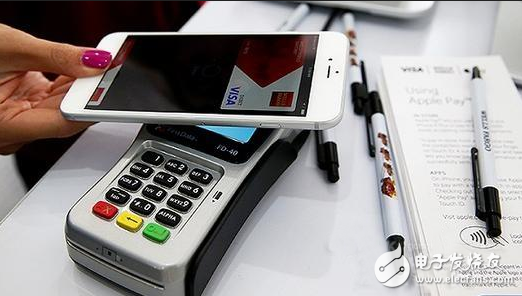Behind the more convenient topic of Apple Pay and Alipay, there are years of debate about the pros and cons of NFC and QR code. More specifically, it is the debate between the near field communication and the graphic code (including QR code, barcode, etc.).
The two-dimensional code encodes "0" and "1" with a point of a specific arrangement and carries information. Information can be output to the network through an image input device or an optical scanning device. Although the reading is slow, one-way, and the amount of information that can be carried is small, the cost is low and the copyability is strong, and it is often used as a one-way read voucher and an identification mark.
NFC evolved from high-frequency wireless communication technology to transmit data through near-field RF signals. Although the cost is high, it can transmit data in two-way communication, fast reading, high security, and includes various methods such as card and device, device and device (reader mode is reading, card emulation mode is read, point-to-point mode) Is interactive), a wide range of applications, such as access control, payment.
Many analysts believe that NFC has a better outlook, especially in line with mobile payments – non-contact, fast, and secure. In addition to mobile payments, bus cards, data transmission, new train tickets, boarding passes, access control, etc. can be achieved through NFC technology. It seems that NFC is the future of smart living.
In fact, whether it is the application of NFC in payment, or the application of QR code in payment and voucher, it is just the tip of the iceberg. Their larger application is to provide solutions for the connection of the Internet of Things.

Is Apple Pay the right way to open the Internet of Things?
Is the Internet of Things that has been sung in the wrong direction?
The Internet of Things extends the "information exchange and communication" between the Internet and the object, and is regarded as an important part of the new generation of information technology after the Internet and the mobile Internet.
In the past few years, technology companies have realized the arrival of the Internet of Things era. Google, Apple and Samsung are all building their own ecosystems Brillo, HomeKit, TIzen, and various device vendors are developing products around these platforms.
What is an industrial router? Which industries are they mainly used in?
With the continuous development of the network and the continuous progress of various industries, some new concepts and development directions have actually emerged during the period. For example, from the current point of view, many enterprises in the development process in order to have good efficiency and speed, as well as the use of more functions, gradually began to use industrial routers. Of course, for this type of router, we also have a lot of problems, so today we will discuss to see, what is an industrial router? Which industries are they mainly used in?
What is an industrial router?
From the basic concept, an industrial router is a wireless data transmission function that provides users with wireless data transmission through a public wireless network. For example, we use mobile phone data to transfer things to another mobile phone or computer, in fact, the principle is very simple. Of course, the specific usage operation is different. In the process of use, the industrial router has the advantage of allowing multiple users to use the same integrated network system to access the network, which is also very convenient in the work. In fact, at present, industrial routers are gradually widely used in different industries, and the practicability is also very strong.
Industrial routers are mainly used in what industries?
The first is some of the contents summarized for the concept and basic principles of industrial routers, and for the use of industrial routers, it is also some of the issues that we are concerned about. From the current point of view, the first is widely used in intelligent transportation, such as in the application of high-definition electronic bayonet, road wireless video surveillance, vehicle monitoring or security monitoring, etc., which is also very important; Secondly, it is also widely used in the financial industry, such as the use of wireless atm self-service terminals, wireless pos machines or other applications; In addition, it is the application of the power industry, such as transformer remote monitoring management, circuit line video surveillance and substation video surveillance and so on. In short, the use of industrial routers is also more extensive.
How to choose an industrial router?
Although the industrial router is widely used now, the choice we made at the beginning is still more tangled, from the feedback of the market, Movingcomm router is actually very good. According to the needs of the industry environment, based on SD-WAN+ Internet of Things, intelligent networking can then be formed into a large local area network through the cloud platform router in many places. Therefore, the focus of security monitoring can also be concentrated to complete the work of remote video surveillance, but also to meet the needs of remote working, for some of the industries we mentioned earlier, the practicality of this program is also very good. Moreover, the technology of remote networking and intelligent networking is also very mature, and the security and stability are also good. In short, the advantages of Movingcomm router are still many.
Industrial Router,Industrial 3G Router,Industrial Cellular Router,Industrial Router Din Rail
Shenzhen MovingComm Technology Co., Ltd. , https://www.movingcommtech.com